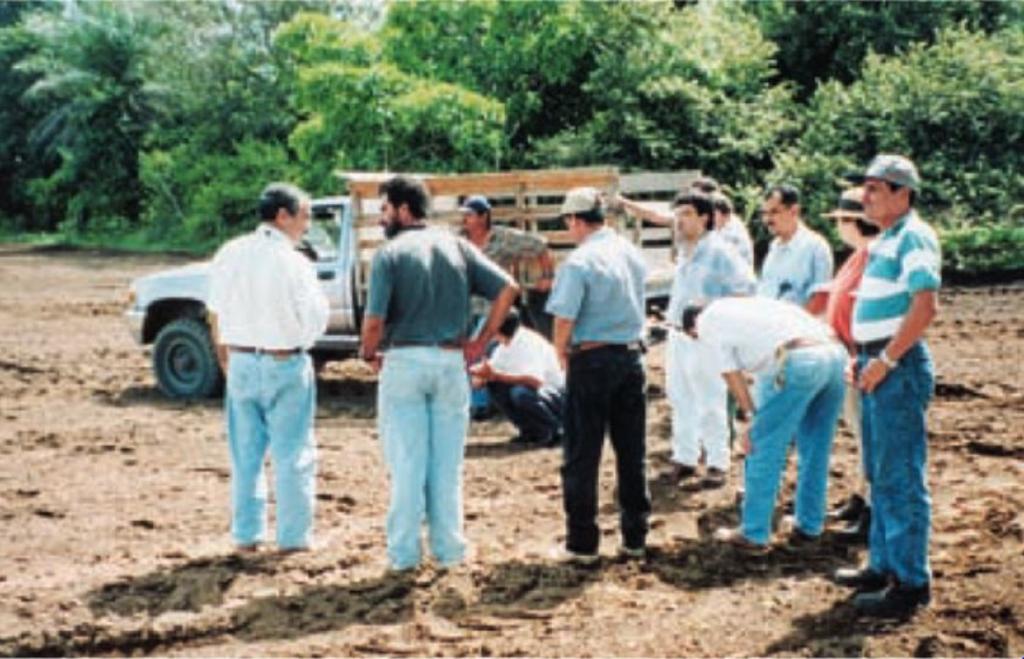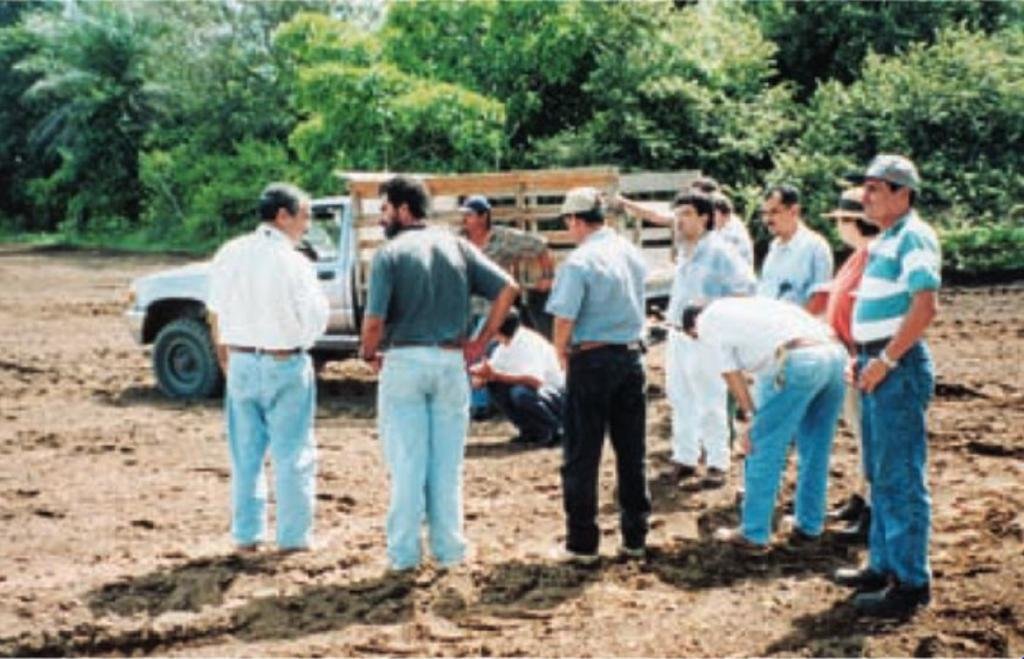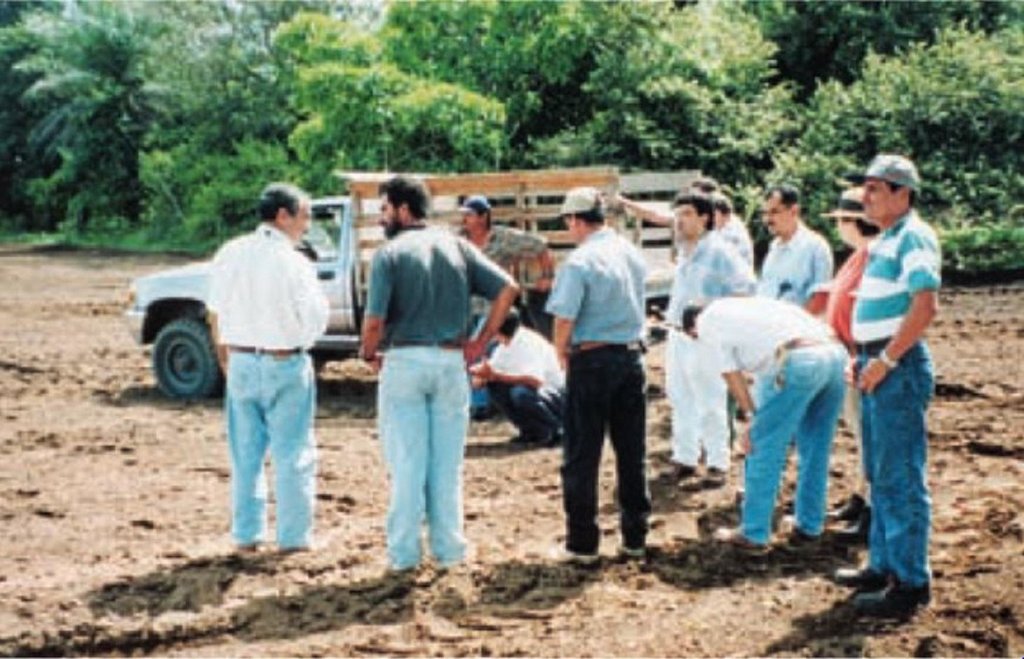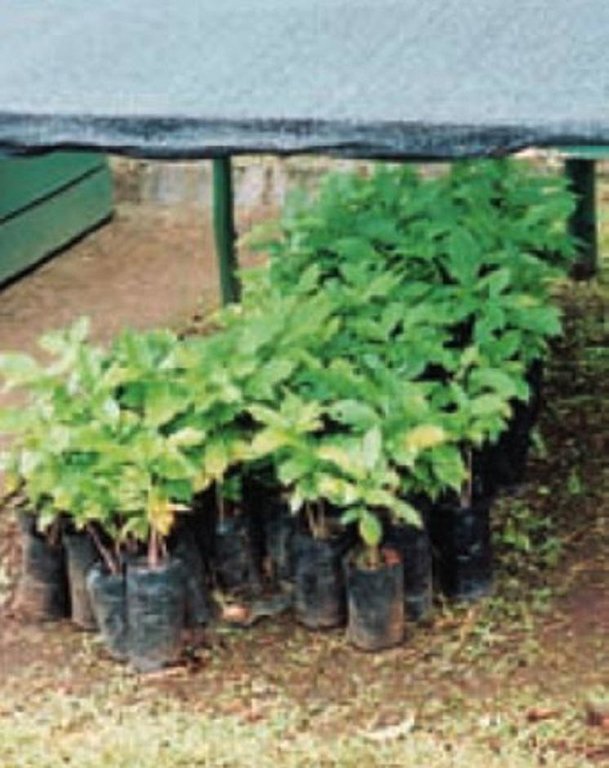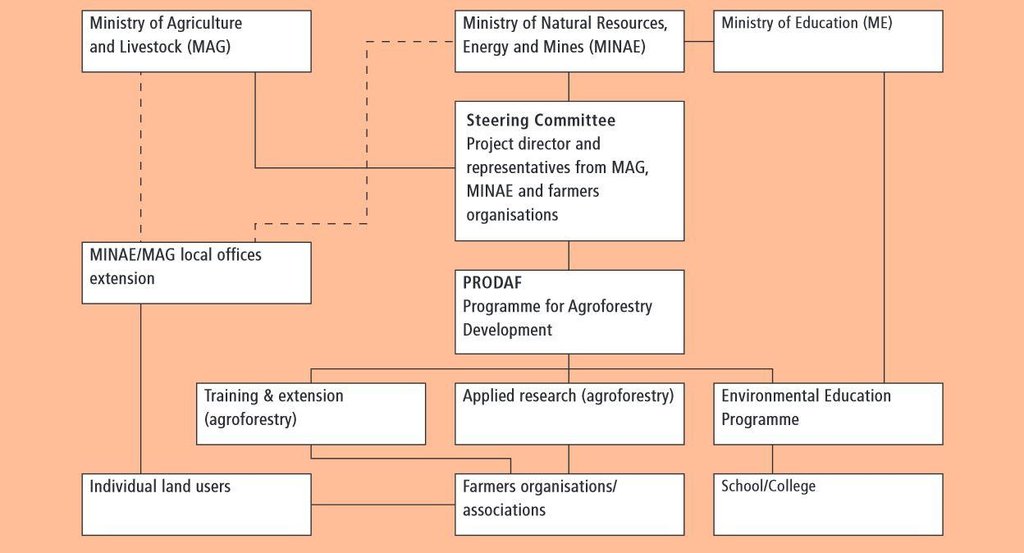Agroforestry extension [Costa Rica]
- Creation:
- Update:
- Compiler: Olman Quiros Madrigal
- Editor: –
- Reviewers: David Streiff, Deborah Niggli
approaches_2391 - Costa Rica
View sections
Expand all Collapse all1. General information
1.2 Contact details of resource persons and institutions involved in the assessment and documentation of the Approach
Name of project which facilitated the documentation/ evaluation of the Approach (if relevant)
Book project: where the land is greener - Case Studies and Analysis of Soil and Water Conservation Initiatives Worldwide (where the land is greener)1.3 Conditions regarding the use of data documented through WOCAT
The compiler and key resource person(s) accept the conditions regarding the use of data documented through WOCAT:
Ja
1.4 Reference(s) to Questionnaire(s) on SLM Technologies
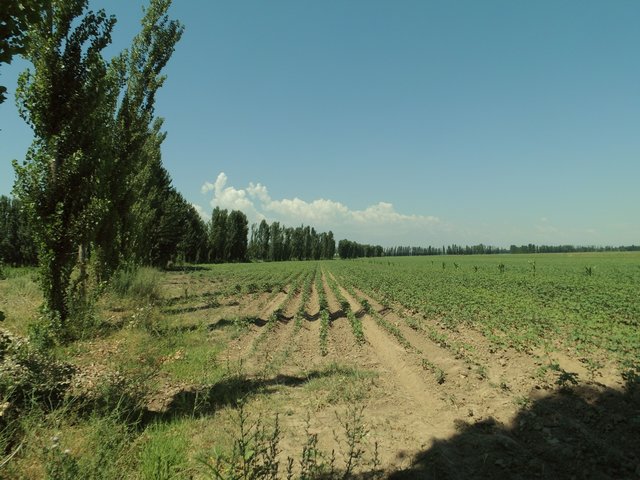
Tree windbreaks within irrigated agriculture in Central Asia [Kyrgyzstan]
Windbreaks of poplar trees (Populus nigra pyramidalis) are a major agroforestry system in irrigated agriculture across Central Asia. Such windbreaks reduce the overall water consumption of irrigated agriculture by 10-20% and increase farm income by 10-15%.
- Compiler: Niels Thevs
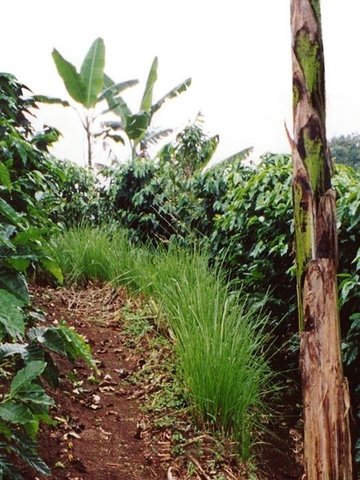
Shade-grown coffee [Costa Rica]
An agroforestry system which combines coffee with shade trees - including fruit, timber and leguminous species - in a systematic fashion.
- Compiler: Olman Quiros Madrigal
2. Description of the SLM Approach
2.1 Short description of the Approach
Participatory extension of agroforestry systems, especially of shadegrown coffee, to promote sustainable and productive use of natural resources among small and medium scale farmers.
2.2 Detailed description of the Approach
Detailed description of the Approach:
Aims / objectives: The Programme for Agroforestry Development (PRODAF) pioneered a new type of agroforestry extension in Costa Rica between 1987 and 1994. PRODAF was positioned under two national ministries (the Ministry of Agriculture and Livestock - MAG and the Ministry of Natural Resources, Energy and Mines - MINAE) and was supported by GTZ (German Technical Cooperation). Agroforestry extension underpinned the following sectors: environmental education, promotion of training and technical assistance in agriculture and forestry, development of programmes for afforestation and agroforestry systems, and promotion/support of farmers' organisations. The approach was based on land users' participation at all stages. The main purpose of the agroforestry extension approach was the development and promotion of sustainable production systems, which were adapted to the local biophysical and socio-economic conditions. This was to enable environmentally friendly production on steep slopes, while at the same time generating sufficient income for small and medium scale farmers in marginal areas of the Acosta-Puriscal region. In this case study, shade-grown coffee was identified to be a system that fulfilled these conditions. Another important objective was the involvement of all family members - including the younger generation.
Role of stakeholders: In the first years PRODAF operated with a top-down development approach implementing technologies, designed by specialists, without consultation of land users. Local needs and experiences were not considered: as a result both adoption of shade-grown coffee was low, and maintenance was poor, despite initial incentives. The change to a participatory, bottom-up approach, with land users being represented in the steering committee (which during this period was absolutely innovative) increased acceptance among the majority of farmers towards shade-grown coffee. Participation of land users during planning and implementation was rewarded with provision of tools, seeds, fertilizer and biocides (fully financed or subsidised). The technology was evaluated on the test plots within existing coffee plantations together with the land users. PRODAF's legacy has been an institutional change in Government policy towards extension.
2.3 Photos of the Approach
2.5 Country/ region/ locations where the Approach has been applied
Country:
Costa Rica
Region/ State/ Province:
San José/Río Parrita
Map
×2.6 Dates of initiation and termination of the Approach
Indicate year of initiation:
1987
Year of termination (if Approach is no longer applied):
1994
2.7 Type of Approach
- project/ programme based
2.8 Main aims/ objectives of the Approach
Promotion of appropriate management of natural resources and adoption of the shade-grown coffee agroforestry system - café arbolado - among small and medium scale farmers.
The SLM Approach addressed the following problems: - various different approaches of forest and agricultural technicians regarding choice and implementation of the technology, - which needed harmonising, - lack of incentives for farmers to adopt technology, - lack of participatory technology development
2.9 Conditions enabling or hindering implementation of the Technology/ Technologies applied under the Approach
availability/ access to financial resources and services
- hindering
Lack of credit for SWC implementation.
Treatment through the SLM Approach: Credit has been made available through the 'productive re-conversion programme' and other credit systems for organic/conservation production, eg Fideicomiso (see under credit).
institutional setting
- hindering
Lack of collaboration and coordination between different institutions.
Treatment through the SLM Approach: Innovative incorporation of land users in decision making, which in the meantime has become a common approach.
legal framework (land tenure, land and water use rights)
- enabling
The existing land ownership, land use rights / water rights moderately helped the approach implementation: Land fragmentation leads to very small areas per household. This hinders implementation of SWC activities. Land users do not have the resources to invest in initial inputs and activities.
- hindering
Subdivision of land hinders adoption of SWC measures.
Treatment through the SLM Approach: Not directly treated by the approach. Diverse incentive mechanisms have to be identified to promote SWC activities on small areas.
knowledge about SLM, access to technical support
- hindering
Lack of technical knowledge, lack of research activities/trials with SWC technologies.
Treatment through the SLM Approach: Promotion of alternative production systems and SWC measures had great impact. Technology was tested on-farm. PRODAF did not focus on research activities.
3. Participation and roles of stakeholders involved
3.1 Stakeholders involved in the Approach and their roles
- local land users/ local communities
Mainly men participated: women are not usually expected to carry out field activities for cultural reasons. The coffee harvest is the only activity where men and women work together in the field.
- SLM specialists/ agricultural advisers
- national government (planners, decision-makers)
3.2 Involvement of local land users/ local communities in the different phases of the Approach
| Involvement of local land users/ local communities | Specify who was involved and describe activities | |
|---|---|---|
| initiation/ motivation | interactive | rapid/participatory rural appraisal; good participation basically through participative rural appraisal |
| planning | interactive | workshops/seminars; incentives are provided for participating land users |
| implementation | interactive | responsibility for major steps; incentives are provided for participating land users |
| monitoring/ evaluation | interactive | workshop/seminars, interviews/questionnaires; |
| Research | interactive | on-farm |
3.3 Flow chart (if available)
3.4 Decision-making on the selection of SLM Technology/ Technologies
Specify who decided on the selection of the Technology/ Technologies to be implemented:
- mainly SLM specialists, following consultation with land users
Explain:
Decisions on the method of implementing the SLM Technology were made by mainly by SLM specialists with consultation of land users
4. Technical support, capacity building, and knowledge management
4.1 Capacity building/ training
Was training provided to land users/ other stakeholders?
Ja
Form of training:
- farmer-to-farmer
- demonstration areas
- public meetings
Form of training:
- trips to projects in, field days, workshops
Subjects covered:
The following subjects were treated: coffee agroforestry system, fruit trees and soil conservation, silvo-pastoralism, soil conservation in general. Beside knowledge transfer, awareness raising and motivation were important aims of training.
4.2 Advisory service
Do land users have access to an advisory service?
Ja
Specify whether advisory service is provided:
- on land users' fields
Describe/ comments:
Name of method used for advisory service: Extension carried out through extension workers was the key element of the overall approach; Key elements: the adequacy of extension for continuation was very good, Different methods were used: on-farm technical assistance; farmer-tofarmer knowledge exchange; demonstration areas and workshops.
4.3 Institution strengthening (organizational development)
Have institutions been established or strengthened through the Approach?
- yes, a little
Specify type of support:
- financial
- capacity building/ training
- equipment
4.4 Monitoring and evaluation
Is monitoring and evaluation part of the Approach?
Ja
Comments:
Bio-physical aspects were ad hoc monitored by 0 through measurements; indicators: yields
Socio-cultural aspects were regular monitored by 0 through observations; indicators: family size
Economic / production aspects were regular monitored by 0 through measurements; indicators: yields and production market
No. of land users involved aspects were regular monitored by 0 through measurements; indicators: land users involved in organisation
There were many changes in the Approach as a result of monitoring and evaluation: The approach changed completely after evaluation of the first phase, from an initial top down methodology with low technology adoption by land users, to a more participative approach heeding land users' opinions and needs, and improving communication between technicians and land users. This was helped by the development of educational materials.
4.5 Research
Was research part of the Approach?
Ja
Specify topics:
- ecology
- technology
Give further details and indicate who did the research:
Results were rather meagre, and the effect on the approach was thus moderate. Previous to PRODAF there was a research project conducted by CATIE (Tropical Agricultural Research and Higher Education Centre) in the approach area, but results were not broadly disseminated.
Research was carried out on-farm
5. Financing and external material support
5.1 Annual budget for the SLM component of the Approach
Comments (e.g. main sources of funding/ major donors):
Approach costs were met by the following donors: government (national - MAG, MINAE): 50.0%; international non-government (GTZ): 50.0%
5.2 Financial/ material support provided to land users
Did land users receive financial/ material support for implementing the Technology/ Technologies?
Ja
5.3 Subsidies for specific inputs (including labour)
- equipment
| Specify which inputs were subsidised | To which extent | Specify subsidies |
|---|---|---|
| tools | partly financed | hand tools |
- agricultural
| Specify which inputs were subsidised | To which extent | Specify subsidies |
|---|---|---|
| fertilizers | partly financed | |
| seedlings | fully financed | |
If labour by land users was a substantial input, was it:
- voluntary
5.4 Credit
Was credit provided under the Approach for SLM activities?
Ja
Specify conditions (interest rate, payback, etc.):
Repayment conditions: Credit was provided through ‘productive re-conversion programme’ to support small-scale organic production and soil conservation. After PRODAF a larger (national) credit programme to promote agroforestry systems was launched, under MAG and National Production Council. Fideicomiso is another national financing programme based on a contract between a bank and development institutions. .
Interest was lower than market rate.
6. Impact analysis and concluding statements
6.1 Impacts of the Approach
Did the Approach help land users to implement and maintain SLM Technologies?
- No
- Yes, little
- Yes, moderately
- Yes, greatly
There was substantial improvement of soil and water management through application of the agroforestry systems.
Did other land users / projects adopt the Approach?
- No
- Yes, little
- Yes, moderately
- Yes, greatly
Some projects in the region as well as in other parts of the country adopted the approach. Various SWC extension programmes have adopted the extension methods promoted by PRODAF, based on the principles of land users participation. In the Ministry of Agriculture and Livestock it has been taken as a basic principle in the National Programme of Agricultural Extension.
6.3 Sustainability of Approach activities
Can the land users sustain what has been implemented through the Approach (without external support)?
- uncertain
If no or uncertain, specify and comment:
While the approach has been institutionalised and a national credit programme set up promoting shade-grown coffee and silvo-pastoral systems, continuation of field production activities is uncertain. Farmers’ motivation to apply technologies was raised with the Environmental Education Programme, but if market prices for coffee decrease /show variability, farmers lose the motivation to maintain i
6.4 Strengths/ advantages of the Approach
| Strengths/ advantages/ opportunities in the compiler’s or other key resource person’s view |
|---|
| Institutionalisation of the basic participatory extension approach within the Ministry of Agriculture and Livestock. |
| Initial top-down approach replaced by participation with land users (How to sustain/ enhance this strength: Continue to spread information about the effectiveness of this change in attitude, and the need for responsiveness in projects and programmes.) |
| Training of land users (knowledge of soil degradation processes and soil and water conservation) (How to sustain/ enhance this strength: Collaboration with farmers organisations, NGOs and agricultural extension services. Better dissemination of research results.) |
| Environmental education in schools (How to sustain/ enhance this strength: Continue support through the Ministry of Education.) |
6.5 Weaknesses/ disadvantages of the Approach and ways of overcoming them
| Weaknesses/ disadvantages/ risks in the compiler’s or other key resource person’s view | How can they be overcome? |
|---|---|
| No economic security guaranteed in the long term because of price fluctuations | Provide a system of incentives, eg lower taxes for those who apply SWC technologies. |
7. References and links
7.1 Methods/ sources of information
- field visits, field surveys
- interviews with land users
7.2 References to available publications
Title, author, year, ISBN:
PRODAF (1992) Informe de evaluación de las parcelas agroforestales establecidas por PRODAF, Periodo 88-91, Puriscal,Quiros O (2000) Nachhaltigkeit von landwirtschaftlichen Produktionsverfahren in bäuerlichen Familienbetrieben in Costa Rica.
Available from where? Costs?
Vauk-Kiel KG: series of: Sozialökonimische Schriften zur Ruralen Entwicklung, Vol. 20
Links and modules
Expand all Collapse allLinks

Tree windbreaks within irrigated agriculture in Central Asia [Kyrgyzstan]
Windbreaks of poplar trees (Populus nigra pyramidalis) are a major agroforestry system in irrigated agriculture across Central Asia. Such windbreaks reduce the overall water consumption of irrigated agriculture by 10-20% and increase farm income by 10-15%.
- Compiler: Niels Thevs

Shade-grown coffee [Costa Rica]
An agroforestry system which combines coffee with shade trees - including fruit, timber and leguminous species - in a systematic fashion.
- Compiler: Olman Quiros Madrigal
Modules
No modules


